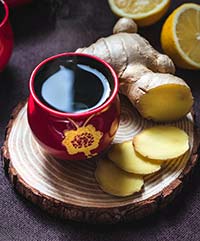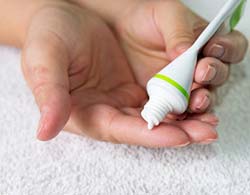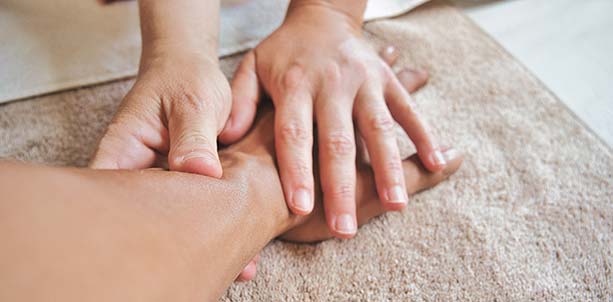Extreme weather changes can affect a person’s pain levels1. The scientific name for the study of these occurrences is called biometeorology (or medical meteorology2). Medical literature provides us with insights from physicians that prolonged exposure to severe outdoor temperatures can worsen painful symptoms in patients. Especially for patients who already suffer from different types of chronic pain. While further study is needed, individuals can implement several strategies to alleviate pain brought on by scorching heat or freezing cold temperatures. Even though we cannot control the weather, It is important to add these tips to our daily routines as we navigate through seasonal shifts in order to avoid unwanted pain.

Icy Winter Days
People who suffer from chronic conditions such as arthritis, rheumatic conditions, depression and/or anxiety are susceptible to increased pain during cold winter months. One theory3 suggests sudden changes in barometric pressure may be to blame. With colder temperatures steadily lowering outdoor air pressure, exposure to these atmospheric changes triggers inflammation in muscle and joint tissue, resulting in pain. We can make ourselves more comfortable during the colder months with some minor adjustments to our daily routines.
Generate Warmth
Regulating your body heat is a simple, but effective way to alleviate pain. Take the time to properly protect yourself during especially low temperatures by wearing extra layers of clothing. Opt for insulated gloves, outerwear and thermal undergarments. Wool is an excellent fabric for preserving body heat-but if it irritates your skin, alternatives such as cashmere and alpaca wool offer warmer, lighter, and softer protection that is gentle on the skin and more effective at retaining heat than synthetic materials. When at home, warm showers and baths can not only help keep you warm, but lower blood pressure and increase blood circulation. Also utilize heating pads or electric blankets, which are an excellent way to stay warm during freezing nights.
Exercise Daily
Routine daily exercise and maintaining a healthy weight will put less stress on your joints, especially those in the back, hips, and knees. While frigid outdoor weather can significantly restrict access to outdoor exercise, studies show staying active and exercising regularly can help reduce pain4. Start small with exercises that are gentle on your joints, like yoga, tai chi or swimming in a heated, indoor pool. Before bracing the chilly weather, remember to stretch and loosen muscles and joints, your body will thank you later.
Spice It Up
 Different foods and drinks can give you warmth as well. Hot tea is not only soothing, but can warm up your hands if you hold your teacup tight. Coffee is scientifically proven to increase body temperature due to the high amounts of caffeine that stimulate the metabolism, encouraging the body to burn fuel. The most effective way to drink coffee is black. Adding cream and sugar will just break down instantly and produce a sugar crash. Besides drinks, certain foods can also keep you warm like ginger, which improves blood circulation, helping to warm your extremities and keep away the chills. For those who like their food a bit more bold, any spicy pepper, like jalapenos or habaneros, will help you heat up. Capsaicin5 is the active component that is found in all peppers, the chemical produces a burning sensation to any tissues it comes into contact with, keeping you nice and toasty.
Different foods and drinks can give you warmth as well. Hot tea is not only soothing, but can warm up your hands if you hold your teacup tight. Coffee is scientifically proven to increase body temperature due to the high amounts of caffeine that stimulate the metabolism, encouraging the body to burn fuel. The most effective way to drink coffee is black. Adding cream and sugar will just break down instantly and produce a sugar crash. Besides drinks, certain foods can also keep you warm like ginger, which improves blood circulation, helping to warm your extremities and keep away the chills. For those who like their food a bit more bold, any spicy pepper, like jalapenos or habaneros, will help you heat up. Capsaicin5 is the active component that is found in all peppers, the chemical produces a burning sensation to any tissues it comes into contact with, keeping you nice and toasty.
Sweltering Summer Days
Heat waves and humidity can have an effect on anyone, however, for people in pain, especially those dealing with chronic pain like arthritis and other conditions, heat can intensify the pain and make it worse6. Studies show hot weather alone can cause dizziness, lightheadedness, fatigue, and muscle cramps7, even in people who do not normally experience muscle pain – so stay cool by using these tips:
Choose Water
When you feel thirsty, it is your body telling you that you are already mildly dehydrated. Our muscles require water, without enough fluid, our muscles can become extremely sensitive and spasm. Make sure to hydrate with water from morning to evening and pick beverages wisely. Drinks such as alcohol and/or highly caffeinated beverages (like soda, coffee or some teas), can cause dehydration. The best choices can also pertain to certain foods, some summer snacks are higher in water, which make them ideal choices for staying cool. According to studies from Australia, about one-fifth of our water consumption comes from foods8 – primarily fruits and veggies. Summer favorites with high amounts of water include: watermelon, cucumbers, cantaloupe, tomatoes, strawberries, iceberg lettuce and pineapple.
Favor Shade Over Sun
The hot temperatures and humidity can exhaust us, but the harmful rays of the sun can also make pain even worse. When venturing outside try to wear a hat, sunglasses and sit or walk in the shade whenever possible. By spending time in the shade, your skin can repair itself and it is a good way to avoid sunburn, which can intensify any existing aches and pains. Put away the denim and sweaters, and choose breathable, light-weight clothes made from polyester or cotton to help protect your skin, and regulate body temperature. For those who already struggle with headaches, or migraines, avoid bright sunlight as much as possible. While just being out in the heat stresses your body, direct sun can cause sunburn and intensify pain, picking shade over sun can help you stay cool.
Pain Cream vs. Pain Pills
Extreme heat can cause painful muscle spasms or soreness, which can occur even if you have never had them before, and especially if the body gets too warm and can’t cool itself fast enough. These spasms are referred to as ‘heat cramps9‘, and are usually experienced by pro-athletes, but in extreme weather can happen to anyone. In this instance, effective pain relief creams can work quicker than oral pain medications. Oral medications and supplements take time to absorb in the body via ingestion, some even require a waiting period of 6 to 8 hours between doses. Pain creams, on the other hand, can better target pain by applying cream directly to affected joints or muscles, providing instant relief. Another advantage to pain relief creams is that you can apply it more frequently than you can take an oral pain relief medication.
 Topical pain relief creams have proven effective for my patients in both weather extremes, especially pain creams that contain hyper-oxygenated oil10. These oils have been praised as a valuable remedy throughout history, from the days of ancient Rome. The Spartans would rub oil onto their bodies before going into battle. In those days, the oil was made from local flowering plants and then left to ferment in the sun for up to 20 years, infusing the oil with oxygen. When massaged in, the action of the rubbing in the soothing oil helps accelerate blood flow deep in the superficial vascular network. Pain creams that utilize oxygenated oil usually have lower doses of menthol, and have been proven to be more effective than menthol-only creams.
Topical pain relief creams have proven effective for my patients in both weather extremes, especially pain creams that contain hyper-oxygenated oil10. These oils have been praised as a valuable remedy throughout history, from the days of ancient Rome. The Spartans would rub oil onto their bodies before going into battle. In those days, the oil was made from local flowering plants and then left to ferment in the sun for up to 20 years, infusing the oil with oxygen. When massaged in, the action of the rubbing in the soothing oil helps accelerate blood flow deep in the superficial vascular network. Pain creams that utilize oxygenated oil usually have lower doses of menthol, and have been proven to be more effective than menthol-only creams.
Different therapies can offer a variety of solutions for all types of pain, but not all options are suitable for everyone or for all types of pain. Consult your doctor about the right treatment option for your pain. While it may not seem like you are doing a lot, taking simple small precautions during periods of extreme weather, and adjusting your routine accordingly, can have an effective impact on managing pain in any type of weather.
References:
- Weather Patterns Associated with Pain in Chronic-Pain Sufferers – American Meteorological Society
- The Meteorology of the Human Body – National Library of Medicine
- How Cold Weather Impacts Joint Pain – Harvard Pilgrim Health Care
- Exercise and Chronic Pain – Utah State University
- Capsaicin – Wikipedia
- The Dangerous Combination of Chronic Pain and Hot Weather – Pain Medicine News
- Temperature-related Death and Illness – National Institute of Environmental Health Science
- Drinking Water and Your Health – healthdirect.gov.au
- Heat Cramps – University of Connecticut
- Ozonated oil in wound healing: what has already been proven? – National Library of Medicine











